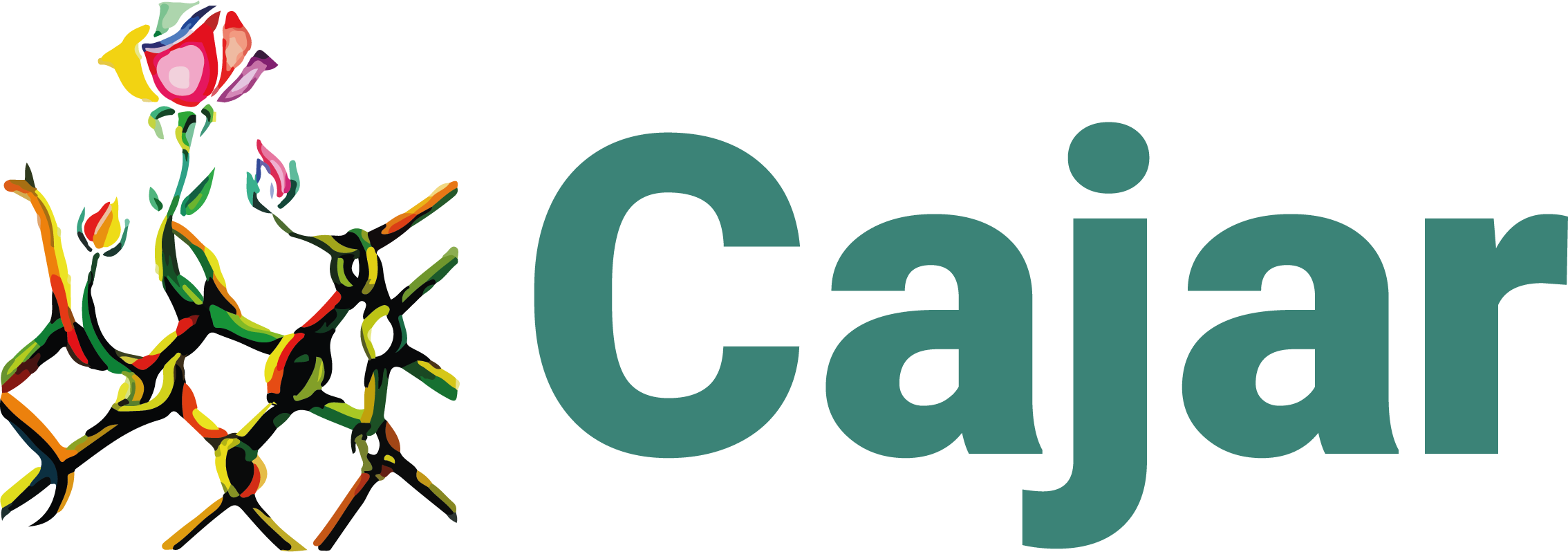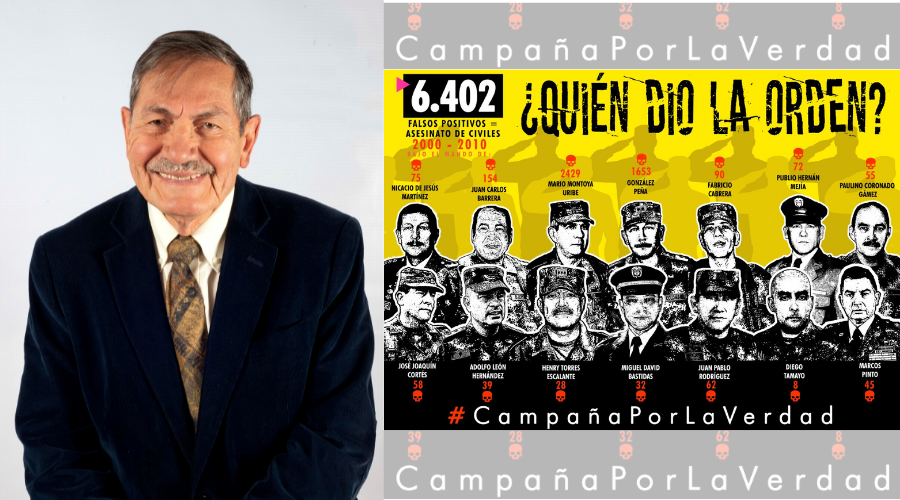Originally published in Confidencial Colombia
On October 19, 2019, the National Movement of Victims of State Crimes, MOVICE, published on its Twitter account the image of a mural in which it pointed out the number of “false positives” committed between the years 2000 to 2010, allegedly under the command of members of the National Army. The mural was titled “Who gave the order?” and showed the names and photographs of several high-ranking members of the military, with a number of cases under each one, for which he is accused of responsibility. Among the military personnel thus singled out is Army General Marcos Evangelista Pinto, former commander of the Second Division. MOVICE requested to “retweet” the image.
MOVICE is an organizational process, without legal status, which brings together more than 200 organizations of victims of forced disappearance, extrajudicial executions, selective killings and forced displacement, as well as human rights organizations, such as the José Alvear Restrepo Lawyers’ Collective (Colectivo de Abogados José Alvear Restrepo, CAJAR). It has been in existence for more than 15 years and is present in 15 departments of the country.
In the middle of 2021, General Pinto, offended by being pointed out as the protagonist of the mural with the number 45 above his head, asked to take it down. He was not pleased to remind the public that about 45 extrajudicial executions, the so-called “false positives”, were reported to have occurred under his command. Thus, General Pinto asked the ordinary justice system to respect his right to his honor and his good name.
In the first instance, the 42nd Municipal Civil Court of Bogota, through a decision of January 22, 2020, denied the charge filed by General Pinto. In the second instance, the 13th Civil Court of Bogota, in a decision of February 2020, protected the rights of the military, and ordered to remove the mural from the streets and social networks, because “while there is no conviction by a judicial authority against the General, MOVICE is forbidden to make value judgments”. Thus, the charge reached the Constitutional Court.
Upon review, the Constitutional Court issued its decision in favor of MOVICE. Regarding the protection of the right to freedom of expression, the Court said that “its nuclear nature may be threatened in case of confirming the second instance ruling, since it prevents the materialization of its constitutional purpose, in this case, to disseminate a matter of obvious public interest and that is part of the democratic control that citizens can exercise”.
It concluded that MOVICE acted in the exercise of its right to participate in the control of political power, and that in this exercise it did not abuse the right to freedom of expression nor did it violate the rights to good name and honor of General Marcos Evangelista Pinto.
For the constitutional judge, the publication of the mural “Who gave the order?” is part of a protected discourse given the gravity surrounding the “false positives”, the immense impact that this crime has had on society and the responsibility of members of the Army who are responsible for a problem of public interest. In addition, he said that the mural is a criticism of the State, whose public officials may have been involved in serious human rights violations. He reiterated that “citizens have the right to publicly denounce facts and actions that they consider irregular and that are attributable to public servants”.
The Court emphasized that the extrajudicial truth is of great relevance, since it contemplates the necessary elements to satisfy this right of the victims and establish the basis for pacification. Therefore, “this channel not only allows to denounce the occurrence of crimes, but also aims to build a story of the history of the transgressions that must be known and also incorporated into their collective memory, as a prerequisite to materialize reconciliation projects in society”.
The Constitutional Court added that “The truth reconstructed through extrajudicial mechanisms reinforces its collective dimension, as it contributes to the construction of historical memory, and also vindicates its autonomous value for the victims. The public narratives that they make, in addition to being a way of inclusion, restore in turn their right to honor and make it possible to materialize the guarantee of telling their own truth. Therefore, it can be affirmed that an attempt at censorship may result in the re-victimization of those affected by the respective crimes”.
The Court’s decision took into account the analyses of several entities invited to share their opinion on the matter. The Special Jurisdiction for Peace, JEP, said in the charging process that, between 2007 and 2009, General Pinto was in command of Infantry Battalion No. 27 “Magdalena,” under investigation by the transitional justice system for false positives. Twenty-seven voluntary testimonies have been presented by members of the battalion and, the JEP explained, 36 victims of alleged extrajudicial executions at the hands of Pinto’s subordinates have been accredited.
The Ombudsman’s Office said that although the mural “Who gave the order?” may affect the dignity of the members of the Army, “the truth is that it is a claim by victims of State crimes due to the lack of results of the administration of justice to determine who were those most responsible for these crimes”.
The Foundation for Press Freedom argued that the memory piece “Who gave the order?” represents a “clamor to know the truth” and, therefore, its expression should be protected.
Despite the judicial appeals against them and the attempts to cover up the faces of the army generals accused, the mural will be protected in Colombia. With this, the relatives of victims of “false positives” are asking for clarification of the responsibility of high-ranking commanders in the thousands of cases of extrajudicial executions. The JEP must continue investigating so that justice can finally be done and we can answer the question “Who gave the order?”.

